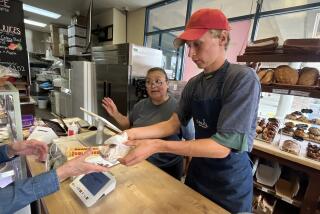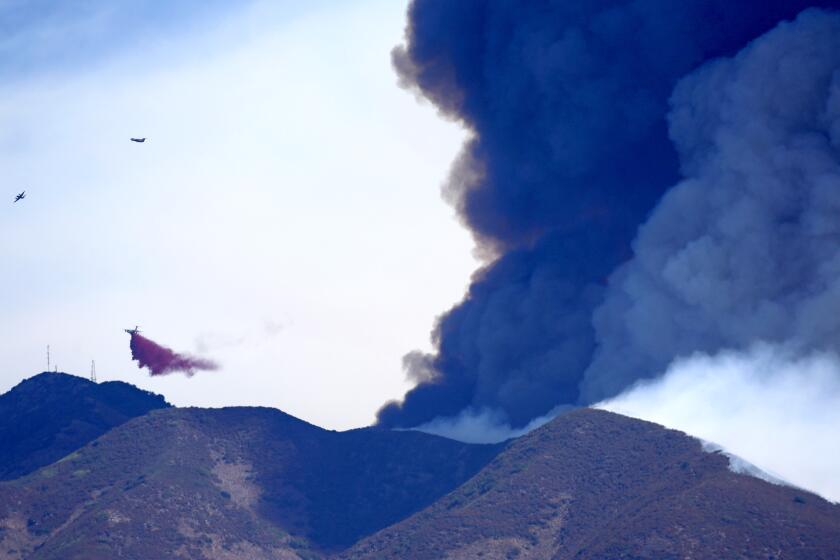Opinion: Earthquakes are a part of life in L.A., but you wouldn’t know it with all the warnings after Mexico City
For people who spent their formative years in Los Angeles in the 1990s (someone like, say, me), being shaken awake in the pre-dawn hours of Martin Luther King Jr. Day in 1994, certain that we’re all going to die, left an indelible mark on our psyches. It is our shared experience of how suddenly and unsparingly violent a major earthquake can be.
It’s also a reminder of our collective complacency.
Since Mexico was struck by two earthquakes this month — both far more powerful than Los Angeles’ 1994 temblor (to say nothing of the two major quakes that struck on the same morning in June 1992) — multiple warnings have been issued about the likelihood of a similar disaster hitting Southern California. The death and destruction in Mexico City, we’re told, remind us of what is destined for Los Angeles.
Should Californians need reminding that earthquakes pose a major risk, as if the ground shaking underneath us isn’t a feature of life here? We’ve had these experiences, and many of us sporadically relive them as anyone would a childhood trauma. But the warnings from policy makers, scientists, The Times Editorial Board and now letter writers indicate that the passage of time may have made it easier to deprioritize earthquake preparation in Los Angeles.
Edward Beres of Pasadena envisions a scenario in Los Angeles like Puerto Rico’s current condition:
The recent earthquakes in Mexico prompted your editorial board to list some of the measures that our governments are taking or could take to help reduce the damage that a similar event here will cause.
A hallmark of our democracy is the safeguarding of its citizens from breathing carcinogenic air, buildings collapsing and much more.
— Hal Rothberg, Calabasas
Reinforcing soft-story buildings and giving folks a few seconds of warning are fine measures, but you brush over what seems to be the most serious threat: “An earthquake of 7.1 or higher could leave you alive but stuck in a paralyzed community without power, water, functioning roadways and aqueducts, and Whole Foods.”
That means no power, natural gas, gasoline, running water or food supplies for months (and as a result, no functioning schools, hospitals, or businesses).
Most of the L.A. region’s utility and gasoline supply lines cross the San Andreas fault, as do highways leading to warehouses that supply the region. I’d like to see some reporting on what our governments’ plans are for the aftermath.
You write that “the American Red Cross suggests a preparation kit with a minimum of three days’ food along with water, flashlight, and batteries.” What do we do on days four through 180? It seems that rather than looking at the earthquake in Mexico as a preview of life here after the next big quake, Puerto Rico having no power for months in the aftermath of Hurricane Maria is a better glimpse of L.A.’s future.
Granada Hills resident Paul Burns details his preparation:
This past week’s events reminded me that I have done my summer update of my earthquake preparedness kit stored in the corner of my backyard in a 55-gallon container. Furthermore, I checked on my camping supplies, and I keep an extra propane tank ready. Also, I try to keep two cars with their tanks at least half-full.
Don’t be scared. Be prepared.
Hal Rothberg of Calabasas puts pressure on policymakers:
Our hearts go out to the people of Mexico. The loss of life and devastation are incomprehensible. Sadly, there’s a lesson to be learned.
Building codes and regulations must be stringent and enforced. Unfortunately, our administration’s anti-science and anti-regulations stands almost assure a wider array of disasters beyond those that devastated Texas, Florida and now Puerto Rico.
A hallmark of our democracy is the safeguarding of its citizens from carcinogenic air, buildings collapsing and much more. It’s a long list, and we each must remind our local, state and national representatives of our concerns and recommendations.
Like global warming, it’s not too late until it’s too late.
Beto Hale of Woodland Hills identifies some lessons for Los Angeles to learn from Mexico:
The city of Los Angeles should send a team of officials to Mexico City to help, watch and learn. L.A. is ill-prepared for a big earthquake. The tremor here on Monday night was a joke.
Also, it’s not right to tell people not to run out of a high-rise structure. Many people did not did not get crushed in Mexico because they followed strict protocols practiced continuously in office buildings, including getting out during the earthquake.
Finally, we did not receive any sort of warning or alarm before or during the tremor on Monday in Los Angeles. We get Amber Alerts all the time. It should be easy to send earthquake alarms via cellphone.
Follow the Opinion section on Twitter @latimesopinion and Facebook
More to Read
A cure for the common opinion
Get thought-provoking perspectives with our weekly newsletter.
You may occasionally receive promotional content from the Los Angeles Times.











